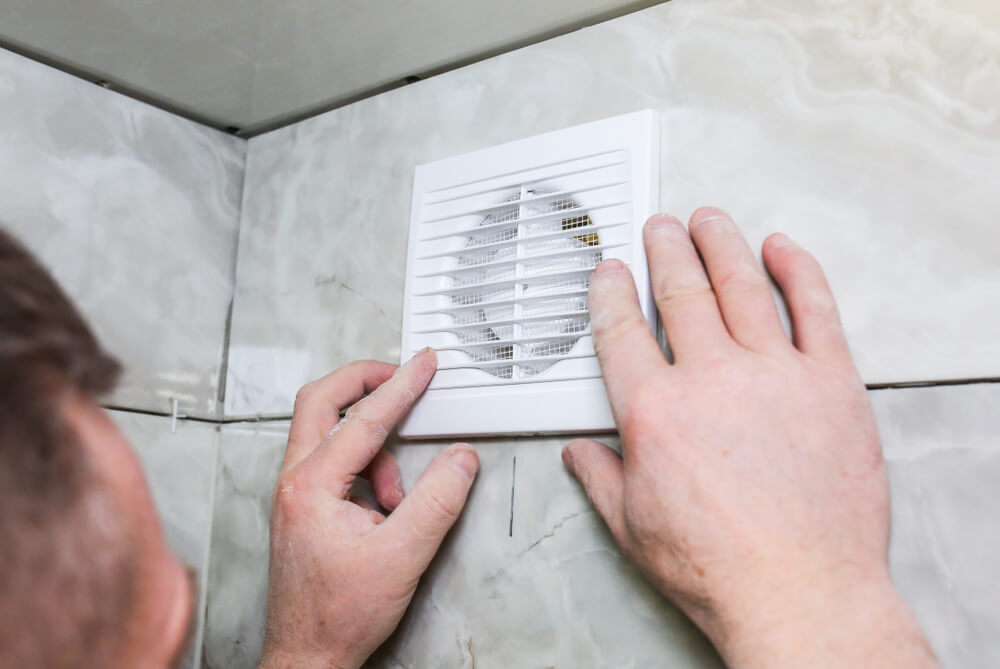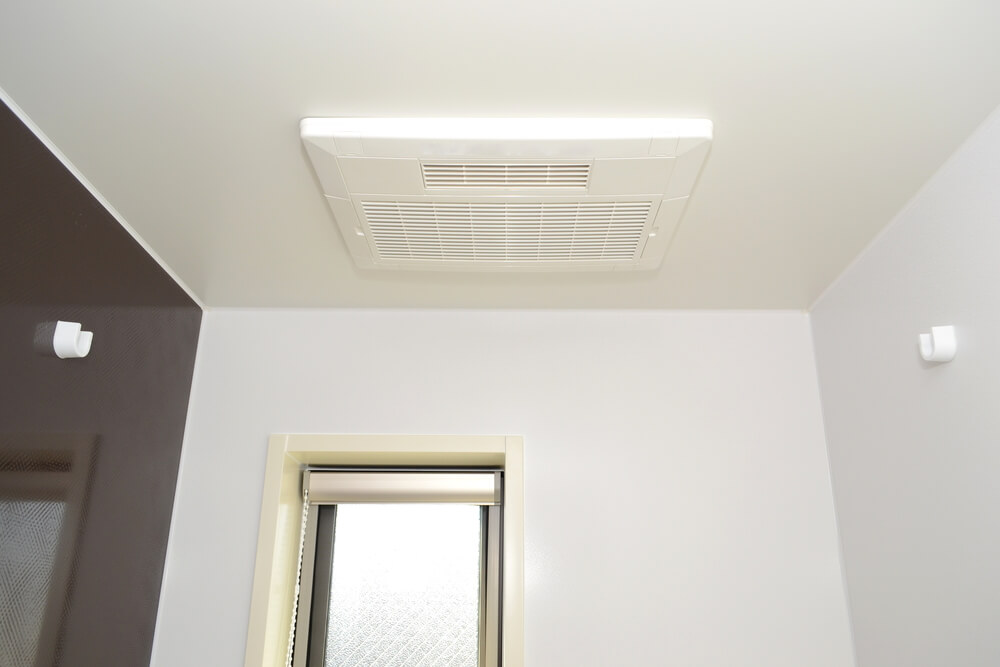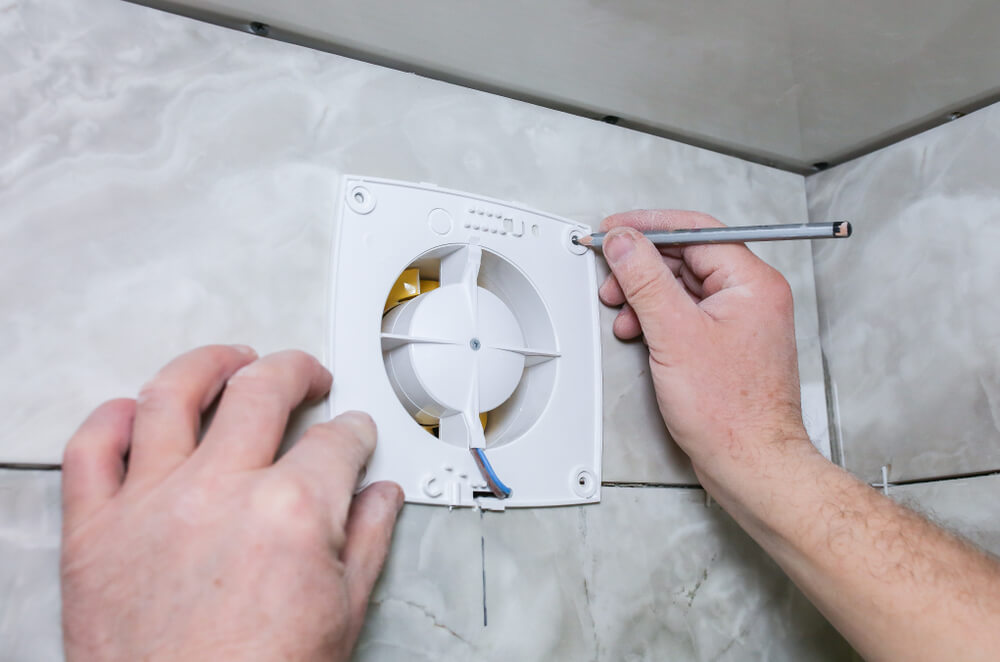Are you thinking about changing your bathroom exhaust fan?
We at HomeStars trust in the power of recommendations and online research, so if you are on that journey of changing or upgrading your bathroom exhaust fan, you have come to the right place because, in this post, we have broken down 5 simple tips for you to choose the best bathroom exhaust fan.
When choosing the correct custom vent, you need to understand how fans work and the proper capacity for your space. A bathroom exhaust fan or any type of outside ventilation is your best friend to fight all the moisture and mold caused by the humidity concentrated in that area. Moist air can destroy your wall paint and cause health problems, so, having the right custom vent improves your health and comfort, and also helps to protect your home.
1. Choose the Right Size
Bathroom exhaust fans are rated at the amount of air they can move, and they are measured in CFM (cubic feet per minute). As a rule of thumb, you need 1 CFM per square foot to battle the bathroom humidity. To determine the square footage of your bathroom, multiply the length times the width. Keep in mind that the minimum allowed fan size is 50 CFM, so if your bathroom is only 42 square feet, you still need a 50 CFM fan. Larger bathrooms will need at least 100 CFMs.
2. Select a Level of Noise
A quiet exhaust fan can completely change your everyday bathroom experience. It’s important to choose an exhaust fan that doesn’t scream at you while you brush your teeth in the morning or are trying to take a relaxing bath. A bathroom’s exhaust fan sound level is measured in sones, which is a measurement like decibels. The lower the sone rating, the quieter the fan will be and the better performance it has, so make sure you pick the right one. For quiet ventilation, the fan should be rated at 1.0 sones or less. A 1.0 sone is barely equivalent to the sound of a refrigerator working. Typical bathroom exhaust fans range anywhere from <0.3 sones to 6.0 sones.
3. Determine the Right Type
The type of exhaust fan you choose will determine where you want to install it. There are at least 3 types of bathroom exhaust fans: wall-mounted, ceiling-mounted, and inline fans:
- Wall mounted: Normally used in main floor bathrooms or when a ceiling mount is not practical. The wall-mounted fan vents directly outdoors without requiring ductwork to vent through the roof.
- Ceiling mounted: This bathroom exhaust fan is the most popular one. It works by connecting to an exhaust duct above the bathroom to pull moisture and odours through the roof or ductwork.
- Inline: This ventilation system is typically used for multiple exhaust points in larger bathrooms. They provide powerful venting for efficient moisture removal.
You can also install a window-mounted bathroom fan that can be inserted just like a window-mounted air conditioner.
4. Tailor the Features
Now that you know the size, noise level, and type that you want, you can start tailoring your bathroom exhaust fan with special features:
- Bathroom exhaust with light or heater: You can replace an existing light or add a night light to your bathroom with a fan that includes a built-in light or a heater.
- Sensor bathroom exhaust: Fans with humidity sensors respond to the moisture levels in the air and activate the fan automatically.
- Bluetooth-enabled bath fans: Some vents are equipped with speakers that can connect to your smart devices, so you can play music while you enjoy your morning shower.
- Energy Efficiency: Energy-efficient fans will normally have low sone ratings, so you can expect them to be quiet. These fans will use about 60% less energy than standard bathroom fans.
Tailored features, such as lights, heating or Bluetooth elements, could increase the demand. Make sure the fan won’t overload the electrical circuit.
5. Find a PRO on HomeStars
When it is time to remove that old fan and install our new one, you can come to HomeStars to hire the right pro for the job. Installation of bathroom exhaust fans commonly requires an electrician and, sometimes, an HVAC expert. Bathroom exhaust fans are required by the Canadian Electrical Code and local building codes for any bathroom that doesn’t have a window that can be opened to have an adequate ventilation system. Keep in mind bathroom exhaust fans should never vent into your attic!
Hiring a professional to install your bathroom exhaust fan will ensure that it gets done right the first time. Pros are equipped with the knowledge and experience to safely help you with all types of bathroom installations. If you plan to refresh or renovate your entire bathroom, we’ve got you covered. Find a verified local electrician on HomeStars to install or replace your bathroom exhaust fan today!



